
How to Use Laser Diode Module: Examples, Pinouts, and Specs
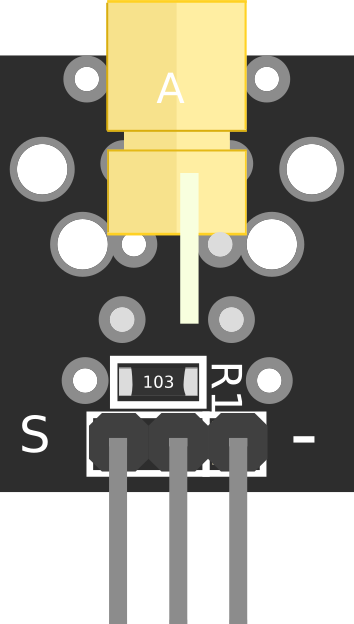
 Design with Laser Diode Module in Cirkit Designer
Design with Laser Diode Module in Cirkit DesignerIntroduction
A Laser Diode Module is a compact device that emits coherent light when an electric current passes through it. It is widely used in applications requiring precision and efficiency, such as:
- Optical Communication: For high-speed data transmission in fiber-optic networks.
- Laser Printing: As a light source for precise imaging.
- Medical Devices: For surgical tools, diagnostics, and therapeutic applications.
- Measurement and Sensing: In distance measurement, barcode scanning, and alignment tools.
- Hobbyist Projects: For DIY laser pointers, engraving, and Arduino-based experiments.
Its small size, low power consumption, and ability to produce focused light make it a versatile component in both industrial and personal projects.
Explore Projects Built with Laser Diode Module
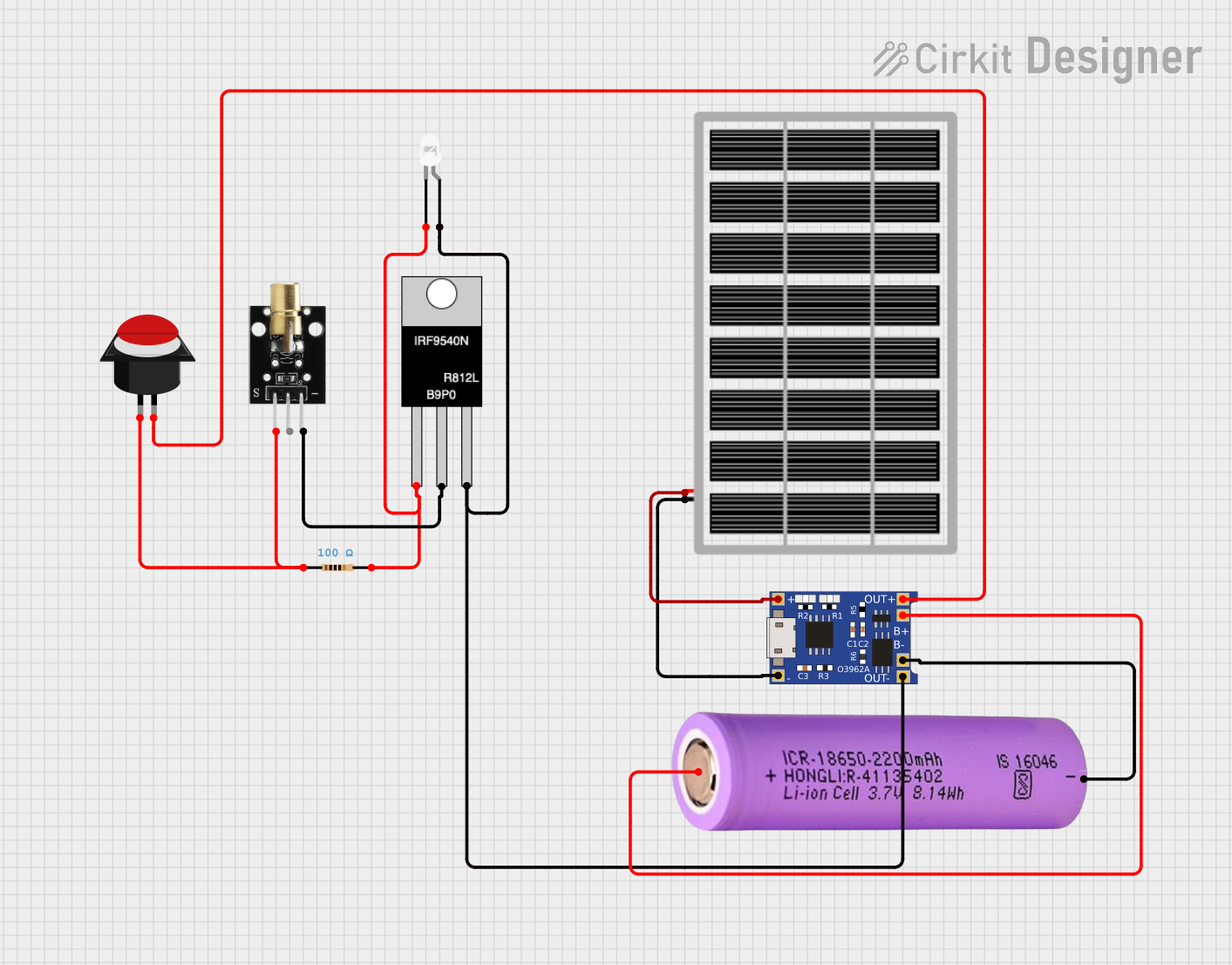
 Open Project in Cirkit Designer
Open Project in Cirkit Designer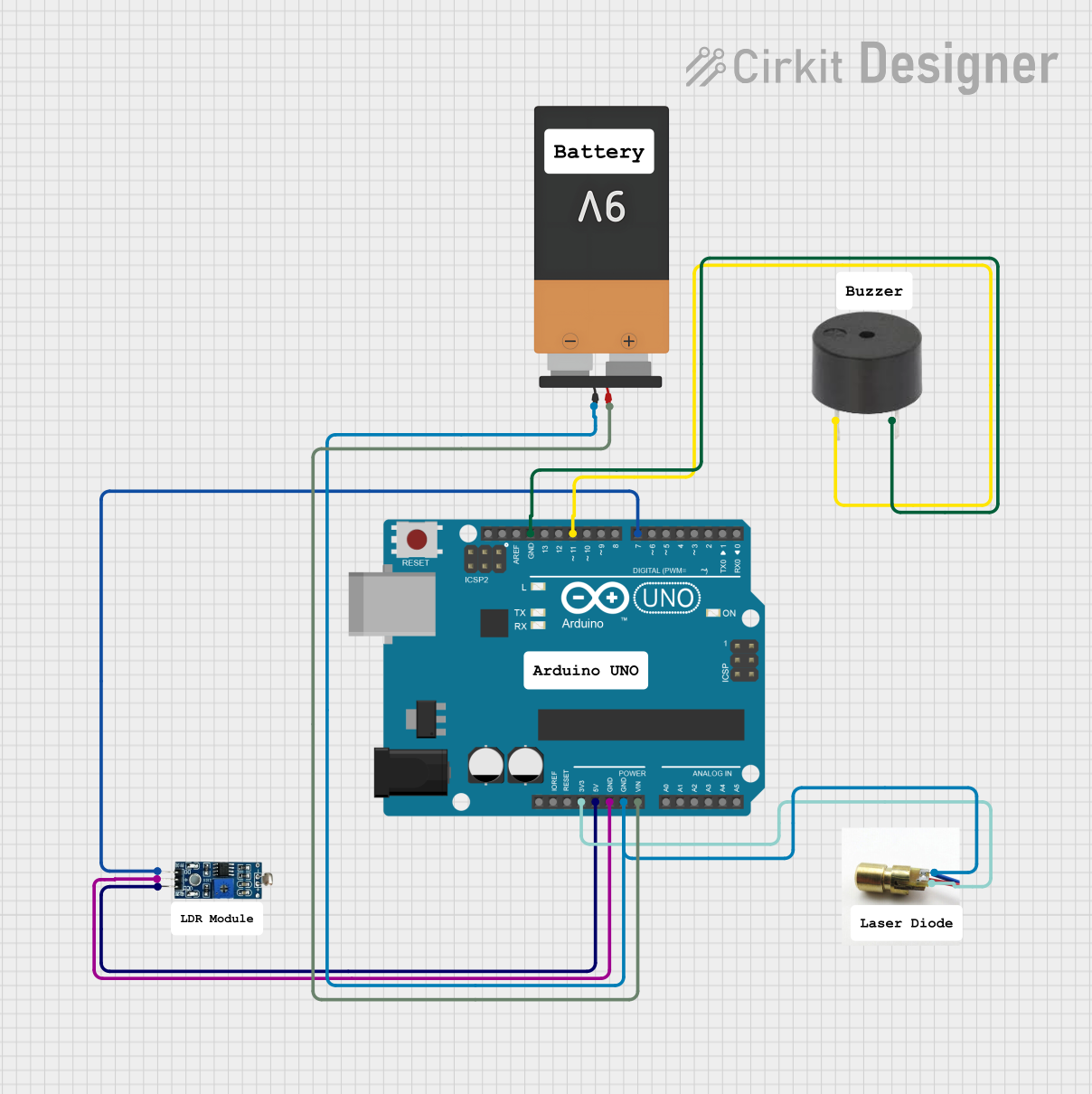
 Open Project in Cirkit Designer
Open Project in Cirkit Designer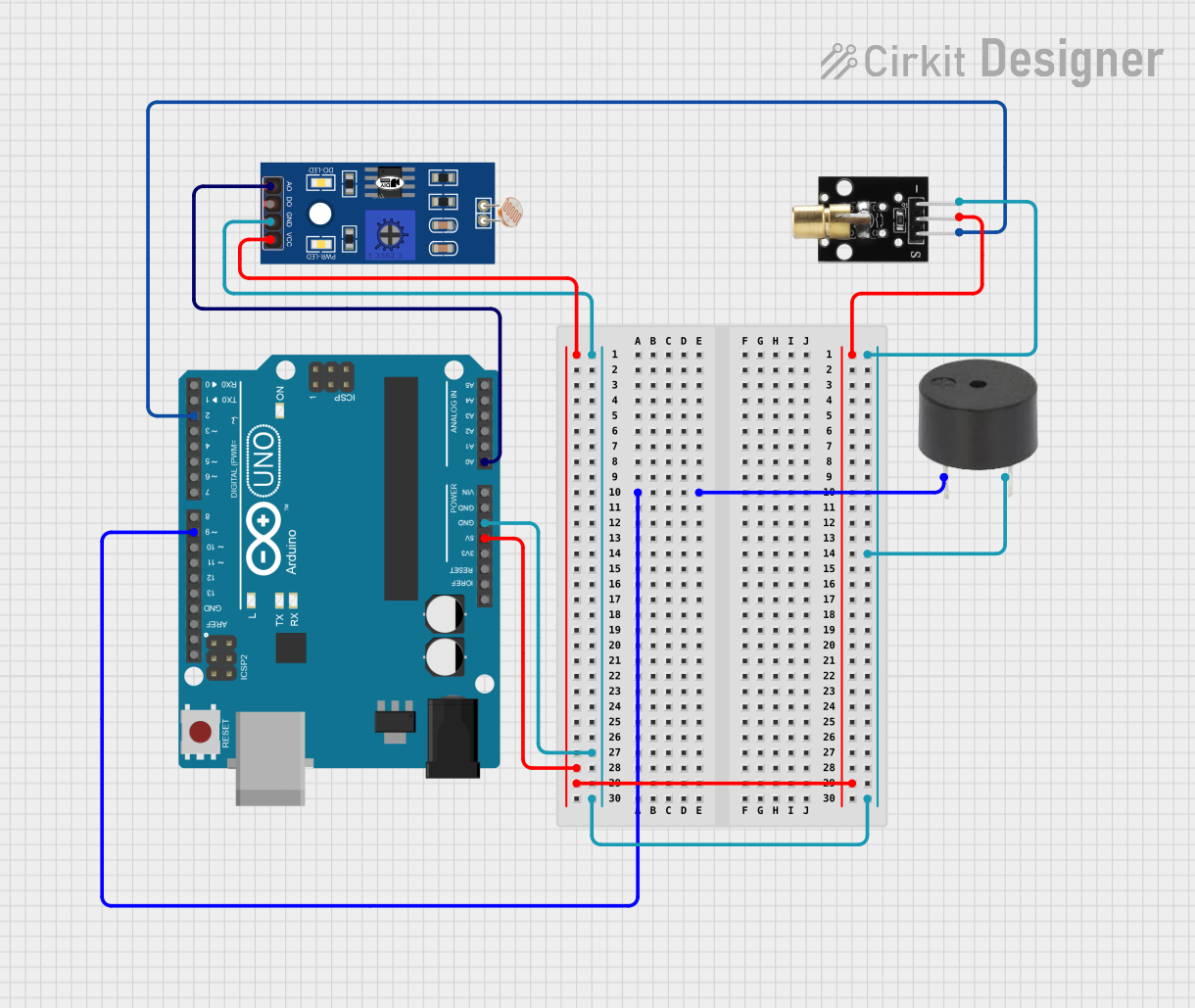
 Open Project in Cirkit Designer
Open Project in Cirkit Designer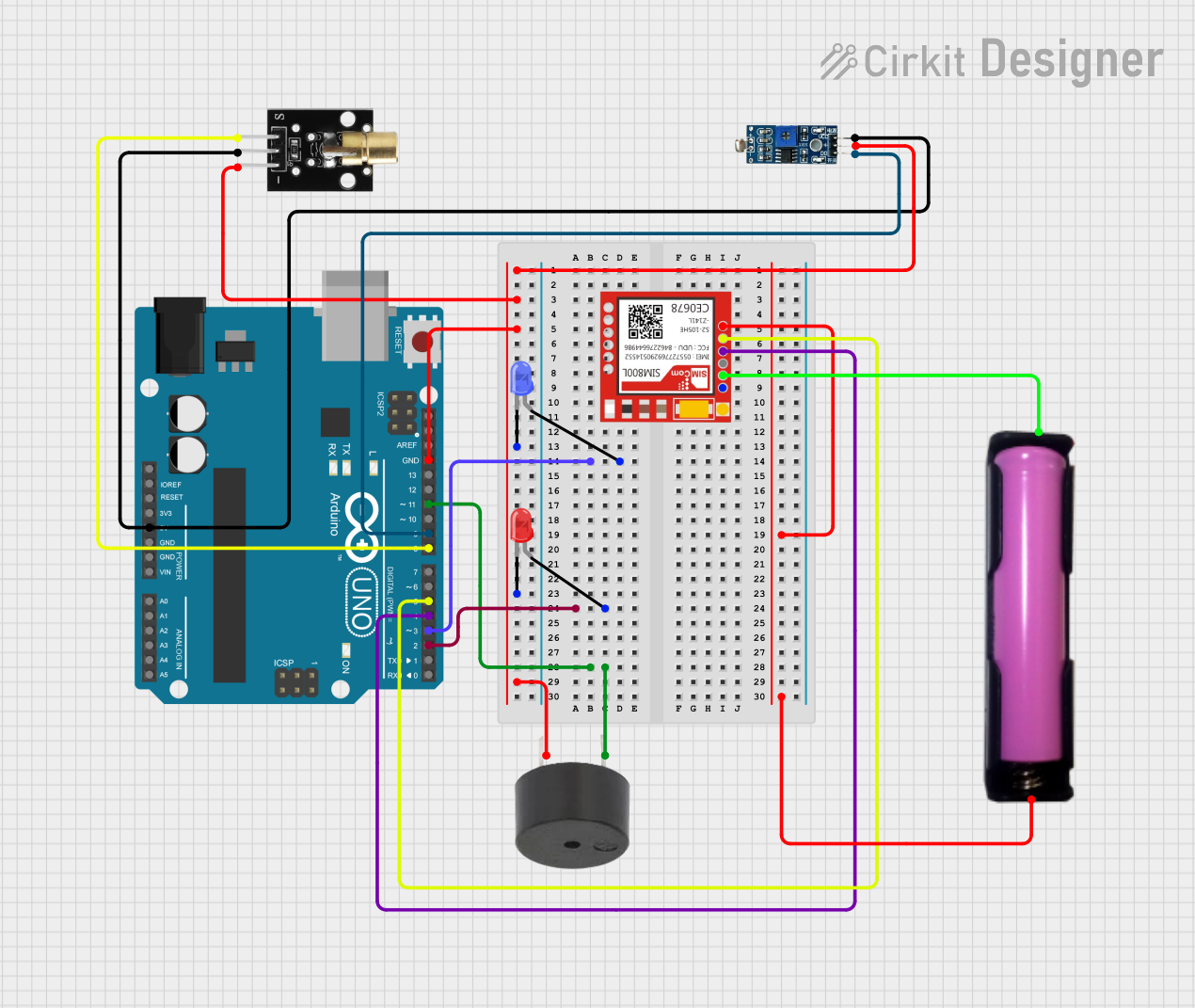
 Open Project in Cirkit Designer
Open Project in Cirkit DesignerExplore Projects Built with Laser Diode Module

 Open Project in Cirkit Designer
Open Project in Cirkit Designer
 Open Project in Cirkit Designer
Open Project in Cirkit Designer
 Open Project in Cirkit Designer
Open Project in Cirkit Designer
 Open Project in Cirkit Designer
Open Project in Cirkit DesignerTechnical Specifications
Key Technical Details
| Parameter | Value |
|---|---|
| Operating Voltage | 3V to 5V DC |
| Operating Current | 20mA to 40mA |
| Wavelength | 650nm (Red Laser) |
| Output Power | <5mW |
| Beam Shape | Dot |
| Operating Temperature | -10°C to 50°C |
| Dimensions | Typically 6mm (diameter) x 18mm |
Pin Configuration and Descriptions
| Pin | Name | Description |
|---|---|---|
| 1 | VCC (+) | Positive power supply input (3V to 5V DC). |
| 2 | GND (-) | Ground connection for the module. |
| 3 | TTL (optional) | Input for modulation control (used in some modules). |
Usage Instructions
How to Use the Laser Diode Module in a Circuit
- Power Supply: Connect the VCC pin to a 3V to 5V DC power source and the GND pin to the ground. Ensure the power supply is stable to avoid damaging the module.
- Modulation (if available): If the module includes a TTL pin, you can use it to control the laser's on/off state with a digital signal (e.g., from a microcontroller).
- Mounting: Secure the module in place using a suitable holder to ensure the laser beam remains stable and aligned.
- Safety Precautions: Always avoid direct eye exposure to the laser beam. Use protective eyewear if necessary.
Important Considerations and Best Practices
- Current Limiting: Use a current-limiting resistor or a constant current driver to prevent overdriving the laser diode.
- Heat Management: Avoid prolonged operation at high currents to prevent overheating. Use a heatsink if necessary.
- Polarity: Double-check the polarity of the connections before powering the module to avoid damage.
- Distance and Focus: Adjust the distance and focus of the laser beam for your specific application.
Example: Connecting to an Arduino UNO
Below is an example of how to control a Laser Diode Module using an Arduino UNO:
// Laser Diode Module Control with Arduino UNO
// This example turns the laser on and off at 1-second intervals.
const int laserPin = 9; // Connect the VCC pin of the laser module to pin 9
// on the Arduino through a current-limiting resistor.
void setup() {
pinMode(laserPin, OUTPUT); // Set the laser pin as an output
}
void loop() {
digitalWrite(laserPin, HIGH); // Turn the laser on
delay(1000); // Wait for 1 second
digitalWrite(laserPin, LOW); // Turn the laser off
delay(1000); // Wait for 1 second
}
Note: Use a resistor (e.g., 220Ω) between the Arduino pin and the laser module to limit current and protect the diode.
Troubleshooting and FAQs
Common Issues and Solutions
Laser Does Not Turn On:
- Cause: Incorrect wiring or insufficient power supply.
- Solution: Verify the connections and ensure the power supply provides 3V to 5V DC.
Laser Beam is Dim:
- Cause: Low input voltage or excessive current limiting.
- Solution: Check the power supply voltage and ensure the current-limiting resistor is appropriate.
Laser Module Overheats:
- Cause: Prolonged operation at high current.
- Solution: Reduce the operating current or add a heatsink for better heat dissipation.
Laser Flickers or Turns Off Randomly:
- Cause: Unstable power supply or loose connections.
- Solution: Use a stable power source and secure all connections.
FAQs
Q: Can I use the Laser Diode Module with a 9V battery?
A: No, the module is designed for 3V to 5V DC. Using a 9V battery without a voltage regulator may damage the module.Q: Is the laser safe for human eyes?
A: No, even low-power lasers can cause eye damage. Avoid direct exposure and use protective eyewear if necessary.Q: Can I adjust the focus of the laser beam?
A: Some modules have an adjustable lens for focusing. Check your module's specifications to confirm.Q: How do I modulate the laser beam?
A: If your module has a TTL pin, you can use a PWM signal from a microcontroller to modulate the laser.
This documentation provides a comprehensive guide to understanding, using, and troubleshooting the Laser Diode Module. Always follow safety guidelines when working with lasers.